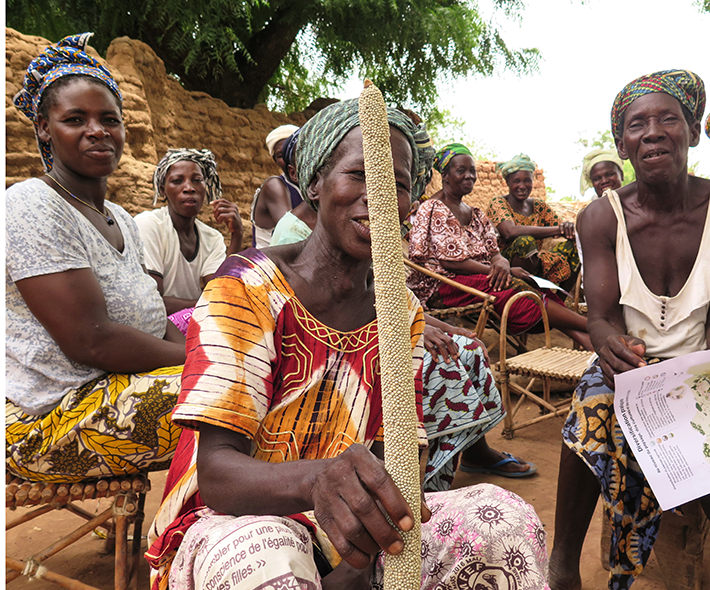Four steps to diversify at multiple levels

A new assessment method means farmers can identify climate resilience gaps and ways to fill them using agrobiodiversity.
In the face of climate change, agricultural diversity is recognized as a strategic ally in the struggle for greater resilience and adaptability. Cultivation of diverse crops and varieties, mixed crop-animal production, and mosaics of land uses have long been part of the farmers’ game plan to reduce vulnerability to drought, flooding, pests, disease and the like.
Boosting diversity is not at all as easy as it may sound as there is no universal method. For the best chance of success, a plan of action must consider the local environment, available agrobiodiversity, social and economic factors, and the specific needs and priorities of farmers and their communities.
Thus, to help in this process, Bioversity International and the Platform for Agrobiodiversity (PAR) have developed a participatory assessment method to guide identification of site-specific opportunities to enhance agrobiodiversity. A recently published guidebook presents a detailed description of the method and gives an overview of why it is important.
The way the assessment works is through a collaborative workshop, where farmers discuss and identify locally tailored action plans, either independently or with supporting NGOs, extension agents or development actors. Its simple design allows for inclusive participation. Participants undertake a careful four-step process that includes an analysis of local farm portfolios to identify resilience gaps, and then ways to fill them using agrobiodiversity. What is unique about this assessment is that it promotes diversification on all levels: genetic, species, field, farm and landscape. It reveals the crop species and varieties, livestock species and breeds, agroecological practices and land uses that can strengthen harvest security and moderate the impact of climate extremes.
Bioversity International and PAR piloted the method in 2017 with communities in Guatemala, India and Mali. The pilot assessments showed that although farmers cultivate species and varieties adapted to harsh and variable climatic conditions, a number of important traits are missing. For example, in Guatemala the assessment revealed that the five maize varieties cultivated by farmers were all susceptible to pests, disease and drought. Sorghum, which is currently grown on a small scale, instead, was identified as an alternative source of food and fodder that could potentially be scaled up because it is more resistant. In Mali, the assessment showed a gap in the availability of pest-tolerant vegetables, though there are many wild vegetables harvested by the community that could fill this gap.
The pilot assessments identified several diversity-rich practices that improve soil health, reduce pest and disease damage, and improve resiliency to climate conditions. These include intercropping, crop rotation, agroforestry, and integrated crop-livestock production. In particular, intercropping and rotation with legumes help with soil fertility. Also highlighted by the assessments is the vital function of animals, from chicken to cattle, as sources of manure that enable crop production on increasingly degraded soils.
Finally, the analyses demonstrated the critical importance of natural areas in providing food, medicine and income sources under climate stress across the sites. The assessments recognized planting trees as a key strategy to control soil erosion, and identified priority landscape areas for reforestation and ecosystem protection.
The guidebook includes examples from the pilot assessments to illustrate how to conduct each step in practice. It also includes a detailed outline of the four steps, offers practical tips and future recommendations.
Download it here.
This research is part of the CGIAR Research Program on Climate Change, Agriculture and Food Security and is supported by CGIAR Trust Fund Donors.
